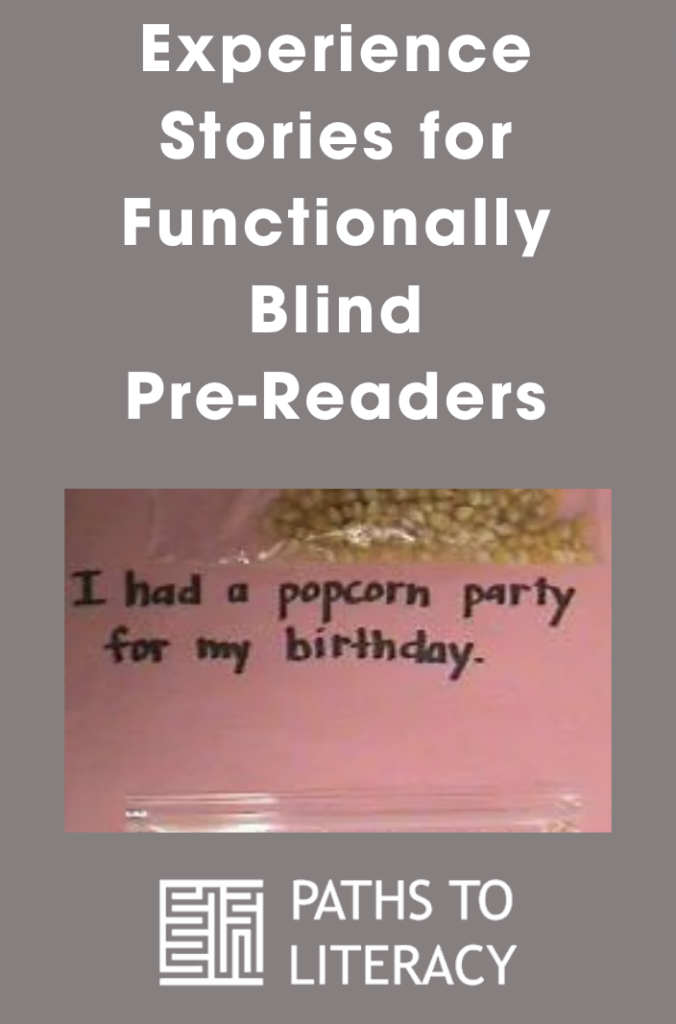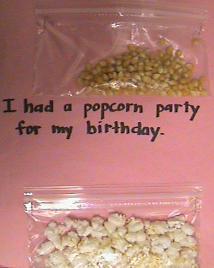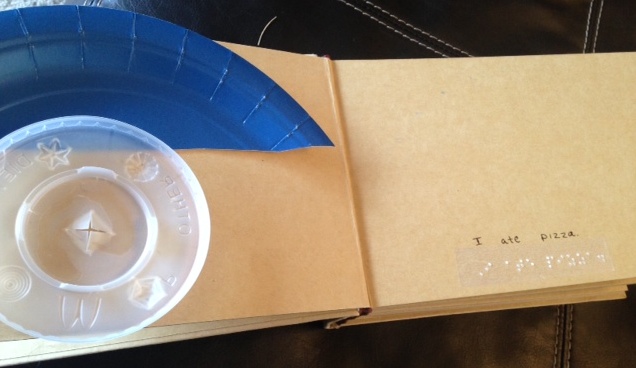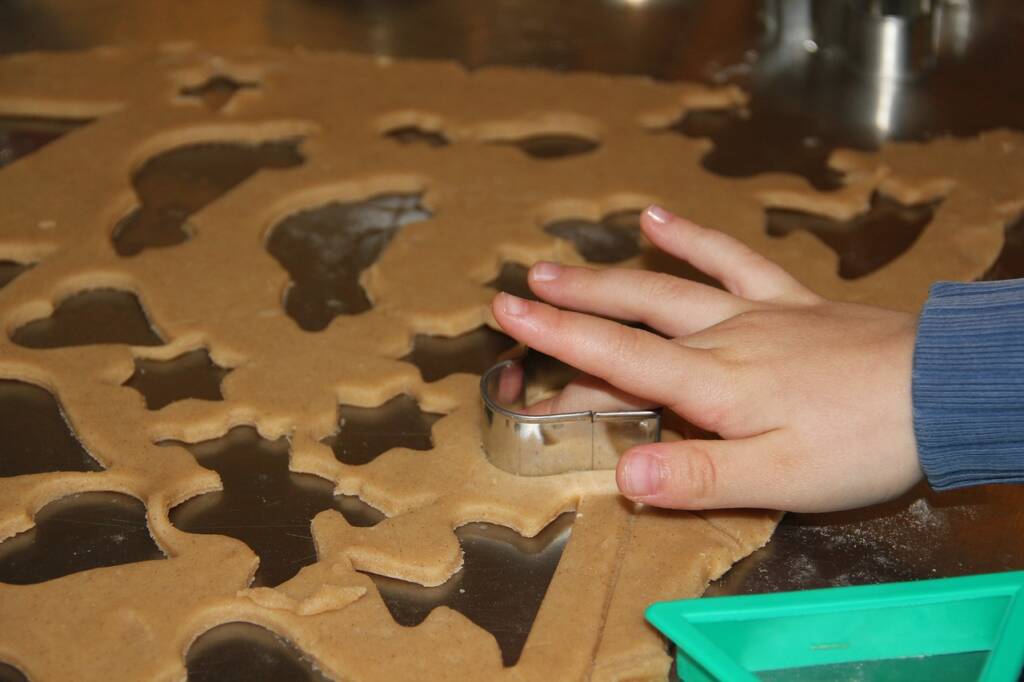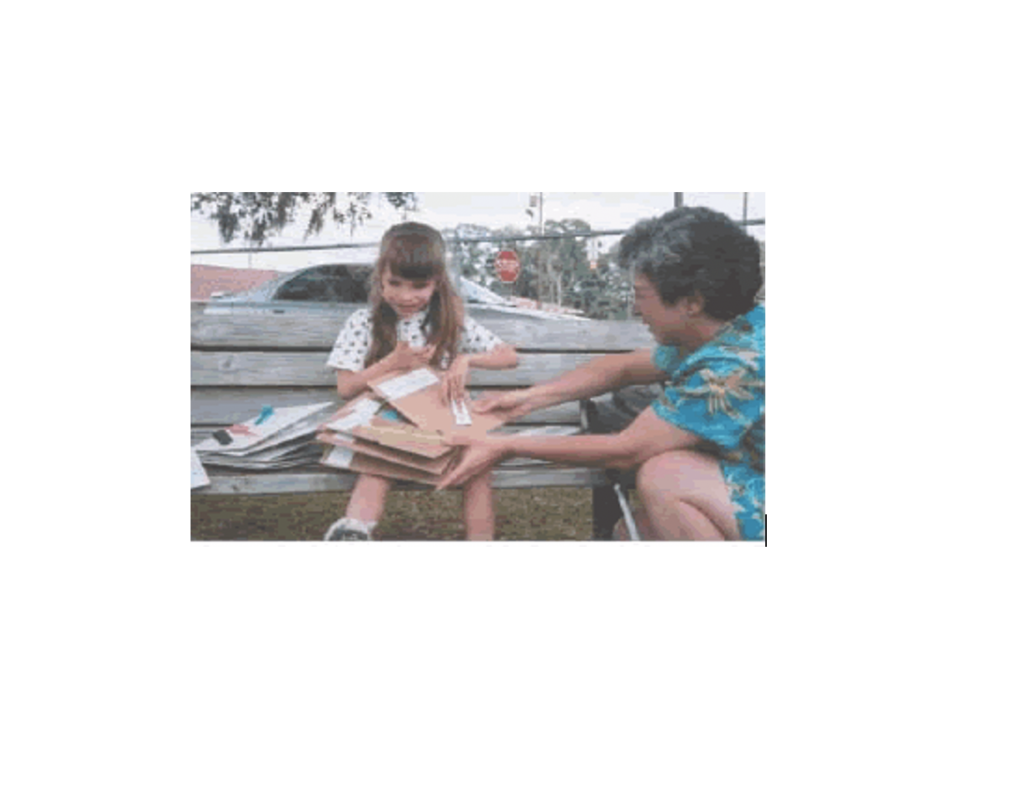Experience stories are a powerful tool for functionally blind children because they combine literacy skills, language skills, and concept development related to real events.
The experience story sequence for a student with emerging braille literacy skills differs only slightly from the traditional approach for sighted children. It might look something like this.
- The event occurs. (The class might go outside to pick up fall leaves.) REMEMBER: THERE MUST BE DISTINCTIVE TACTUAL, AUDITORY, AND MOTOR COMPONENTS TO THE EVENT FOR THE BLIND STUDENT!
- IMMEDIATELY after the event, the class writes a story about the event. The teacher writes the language generated by the students on a chart. The braille user participates by contributing language and listening to the language contributed by peers. Sometimes braille users “write” in braille as the teacher writes in print on the chart. Usually the teacher and the student write only a few words of the text together in order to keep up with the other students. The whole sentence should be voiced even if only a word or two is written. If the general education teacher or a teaching assistant is doing this activity with the student, they may use grade one (uncontracted) braille. The VI teacher brailles the complete material correctly as soon as possible and substitutes grade two (contracted) braille for the grade one braille, if the student is learning grade two braille, so that when the student re-reads the material, the braille is appropriate. The advantage to having the braille user “write” as the language is produced is that a connection between language and writing is established in the same way that it is being established for the sighted peers watching the teacher put words on the chart.
- The braille user puts tactual pictures on the title page and throughout his story where ever appropriate. (Tactual pictures might include leaves and anything else the student noticed during the experience. BE OPPORTUNISTIC! PICK UP LOTS OF THINGS DURING THE EVENT THAT CAN BE WORKED INTO THE STORY.
- The braille user reads his story to his teacher, his peers, and family members using correct braille fluency movements pared with the language he remembers from step two. He is not actually recognizing words and letters at this point and should not be encouraged to slow down, use up and down finger movements to examine individual words and letters, or go back over words and letters. The emerging skill at this stage would be for the student to start matching words vocally and tactually by moving fingers to a new tactual unit when a new word is voiced. This is more of a one-to-one correspondence skill than it is a braille character recognition skill.
- The braille user collects stories and keeps them in library centers at school and at home so that he can re-read them frequently. Some braille word recognition may emerge as key words on title pages and in the story are remembered and used to identify favorite stories.
This article was originally published by Texas School for the Blind and Visually Impaired (TSBVI) and is reprinted here with permission.
